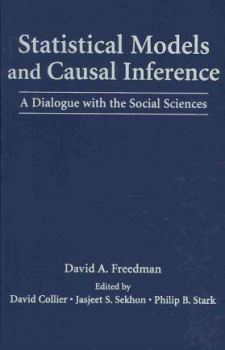Model validation and significance testing In its standard form, a significance test is not the kind of ‘severe test’ that we are looking for in our search for being able to confirm or disconfirm empirical scientific hypotheses. This is problematic for many reasons, one being that there is a strong tendency to accept the null hypothesis since they can’t be rejected at the standard 5% significance level. In their standard form, significance tests bias against new hypotheses by making it hard to disconfirm the null hypothesis. And as shown over and over again when it is applied, people have a tendency to read “not disconfirmed” as “probably confirmed.” Standard scientific methodology tells us that when there is only say a 10 % probability that pure sampling
Topics:
Lars Pålsson Syll considers the following as important: Statistics & Econometrics
This could be interesting, too:
Lars Pålsson Syll writes Keynes’ critique of econometrics is still valid
Lars Pålsson Syll writes The history of random walks
Lars Pålsson Syll writes The history of econometrics
Lars Pålsson Syll writes What statistics teachers get wrong!
Model validation and significance testing
In its standard form, a significance test is not the kind of ‘severe test’ that we are looking for in our search for being able to confirm or disconfirm empirical scientific hypotheses. This is problematic for many reasons, one being that there is a strong tendency to accept the null hypothesis since they can’t be rejected at the standard 5% significance level. In their standard form, significance tests bias against new hypotheses by making it hard to disconfirm the null hypothesis.
 And as shown over and over again when it is applied, people have a tendency to read “not disconfirmed” as “probably confirmed.” Standard scientific methodology tells us that when there is only say a 10 % probability that pure sampling error could account for the observed difference between the data and the null hypothesis, it would be more “reasonable” to conclude that we have a case of disconfirmation. Especially if we perform many independent tests of our hypothesis and they all give about the same 10 % result as our reported one, I guess most researchers would count the hypothesis as even more disconfirmed.
And as shown over and over again when it is applied, people have a tendency to read “not disconfirmed” as “probably confirmed.” Standard scientific methodology tells us that when there is only say a 10 % probability that pure sampling error could account for the observed difference between the data and the null hypothesis, it would be more “reasonable” to conclude that we have a case of disconfirmation. Especially if we perform many independent tests of our hypothesis and they all give about the same 10 % result as our reported one, I guess most researchers would count the hypothesis as even more disconfirmed.
 Most importantly — we should never forget that the underlying parameters we use when performing significance tests are model constructions. Our p-values mean next to nothing if the model is wrong. As eminent mathematical statistician David Freedman writes:
Most importantly — we should never forget that the underlying parameters we use when performing significance tests are model constructions. Our p-values mean next to nothing if the model is wrong. As eminent mathematical statistician David Freedman writes:
I believe model validation to be a central issue. Of course, many of my colleagues will be found to disagree. For them, fitting models to data, computing standard errors, and performing significance tests is “informative,” even though the basic statistical assumptions (linearity, independence of errors, etc.) cannot be validated. This position seems indefensible, nor are the consequences trivial. Perhaps it is time to reconsider.
